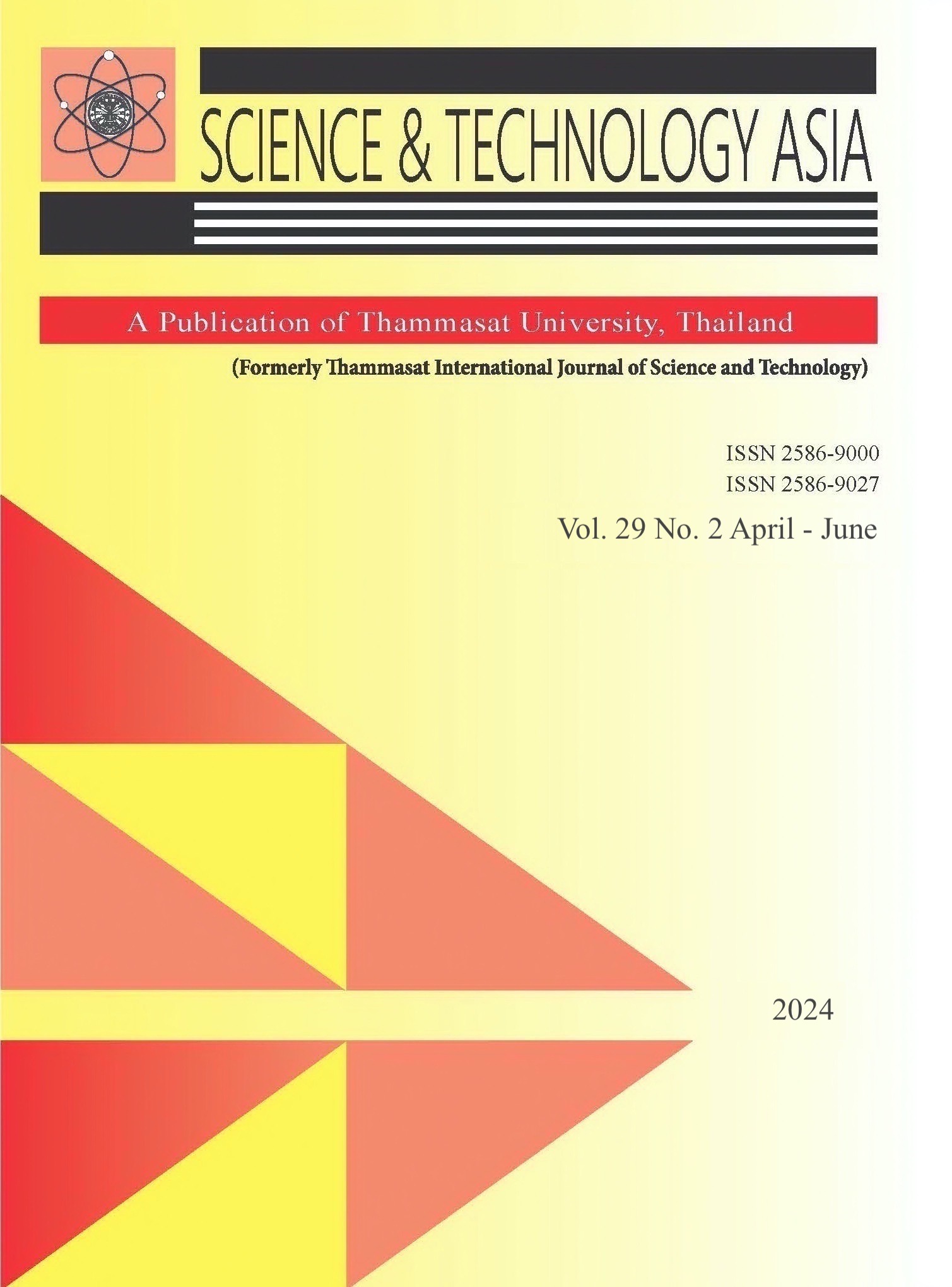Using Digital Image Correlation (DIC) in MATLAB Monitoring Number and Size of Speckle Granules
Main Article Content
Abstract
This research aims to study the effect of changing the number and size of speckle granules to compare the result of the material properties between using the Digital Image Correction method (DIC) in MATLAB and the standard average of material properties. This research used stainless steel - grade 304 (UNS S30400) by testing 3 sets of experiments with an unequal number and size of speckle granules in each test to compare the effect of the number and size of speckle granules in calculations using Digital Image Correlation (DIC). The results show that the errors of changing the number of speckle granules from Digital Image Correlation (DIC) in Young’s Modulus (𝑬) around 0.017238407-0.063998425% and Poisson’s ratio (𝝑) around 0.072674419-1.251840943% and the errors of changing the size of speckle granules from Digital Image Correlation (DIC) in Young’s Modulus (𝑬) around 0.030729470-0.316238141% and Poisson’s ratio (𝝑) around 0.069043207-0.531703259%.
Article Details

This work is licensed under a Creative Commons Attribution-NonCommercial-NoDerivatives 4.0 International License.
References
Rittipol, C. and Prapot, K. 2013. Mix Numerical-Experimental Technique for identification of constitutive parameters. pp.11- 25.
Lecompte D, A. Smits, S. Bossuyt, H. Sol, J. Vantomme, D. Van Hemelrijck and A.M. Habraken. Quality assessment of speckle patterns for digital image correlation. Optics and Lasers in Engineering 2006;44(11):1132-45.
Hung, P.-C. and A.S. Voloshin. In-Plane Strain Measurement by Digital Image Correlation. J. of the Braz. Soc. of Mech. Sci. & Eng. 2003;25(3):215-21.
Barber, J.R. 2002. Elasticity. 2nd Edition. Kluwer Academic Publishers, Netherlands.
Besnard G, F. Hild and S. Roux. “FiniteElement” displacement fields analysis from digital images: application to Portevin–Le Châtelier bands. Experimental Mechanics 2006;46(6):789-803.
Bornert M, F. Brémand, P. Doumalin, J.C. Dupré, M. Fazzini, M. Grédiac, F. Hild, S. Mistou, J. Molimard, J.J. Orteu, L. Robert, Y. Surrel, P. Vacher and B. Wattrisse. Assessment of digital image correlation measurement errors: methodology and results. Experimental Mechanics 2009;49(3):353-70.
Timoshenko S. and J.N. Goodier. 1969. Theory of Elasticity. McGraw-Hill.
Bing P, X. Hui-min, X. Bo-qin and D. Fulong. Performance of sub-pixel registration algorithms in digital image correlation. Meas. Sci. Technol. 2006;17(6):1615-21.
Reddy J. 2005. An Introduction to the Finite Element Method. McGraw-Hill.
Lancaster P. and K. S̆alkauskas. 1986. Curve and Surface Fitting: An Introduction. Academic Press, Great Britain.
Zill, D. and W. Wright. 2011. Multivariable Calculus. Jones & Bartlett Learning.


